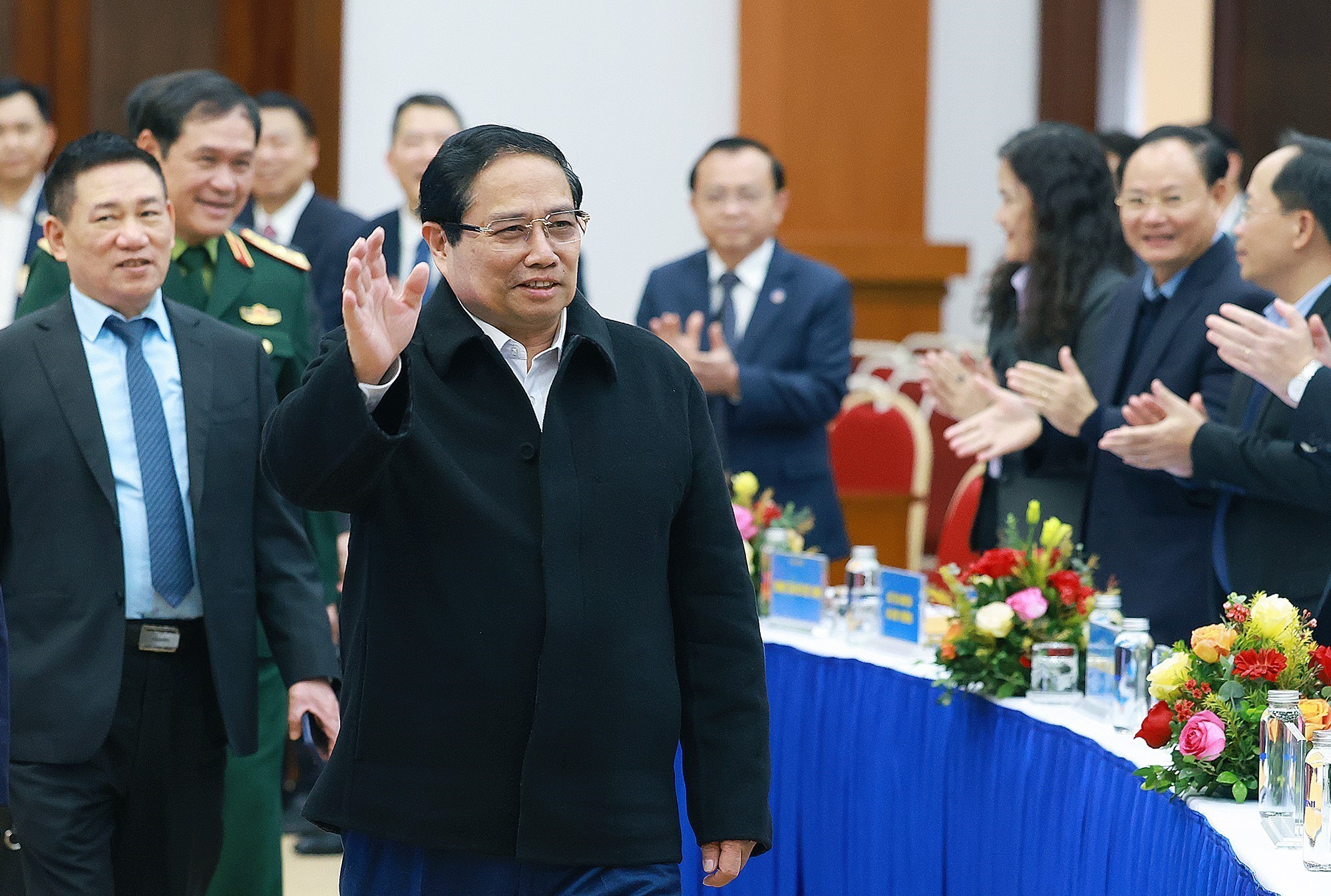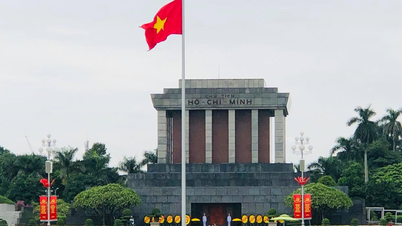
Current status of state budget restructuring and public debt management in Vietnam
Restructuring the state budget and managing public debt to ensure a safe and sustainable national finance is a major policy of great significance: It was developed and implemented in the spirit of the Resolution of the 12th National Congress of the Communist Party of Vietnam "Focusing on solving the problem of restructuring the state budget and ensuring public debt safety" (1) . Following that, the Politburo issued for the first time Resolution No. 07-NQ/TW, dated November 18, 2016, "On policies and solutions for restructuring the state budget and managing public debt to ensure a safe and sustainable national finance".
Implementing the Party's policy, the Ministry of Finance advised the Government to issue Resolution No. 51/NQ-CP, dated June 19, 2017, "Issuing the Government's Action Program to implement Resolution No. 07-NQ/TW, dated November 18, 2016, of the Politburo on policies and solutions to restructure the state budget and manage public debt to ensure a safe and sustainable national financial system", submitting to the National Assembly for approval Resolution No. 25/2016/QH14, dated November 9, 2016, "On the national 5-year financial plan for the period 2016 - 2020"; Resolution No. 23/2021/QH15, dated July 28, 2021, "On the national financial plan and borrowing and repayment of public debt for the 5-year period 2021 - 2025" specifies the objectives, requirements, tasks, projects, main solutions, assignment of organization and implementation. The implementation process has achieved positive results.
On restructuring the state budget
In the development process, our Party has identified that finance is the lifeblood of the economy, the state budget is one of the most important policy tools of the State to perform the function of regulating and orienting the economy. Restructuring the state budget must be placed in the overall restructuring of the economy, associated with innovation of the growth model, ensuring efficiency, comprehensiveness, fairness, sustainability, and reasonable mobilization of resources. Perfecting the system of revenue policies associated with restructuring the state budget revenue in the direction of promoting reasonable revenue increase combined with nurturing revenue sources, increasing the proportion of sustainable revenue sources, promoting the fight against revenue loss, expanding the revenue base, in line with international practices. Gradually restructure state budget expenditure in the direction of increasing the proportion of development investment expenditure, gradually reducing the proportion of regular expenditure. The state budget deficit ratio in the period of 2021 - 2025 will average 3.7% of GDP, striving to reduce it to below 3.7% of GDP. Borrowing to cover the deficit is only used for development investment, the state budget is only spent within the economy's capacity and only borrowed within the ability to repay.
The state budget revenue structure has been innovated: a system of legal documents on tax has been issued, such as the Law on Export Tax, Import Tax, Law on Value Added Tax, Law on Special Consumption Tax, Law on Tax Administration. In particular, in the period of 2021 - 2023, the tax policy system has been reviewed and completed to promptly implement short-term solutions to support businesses and people and promote economic and social recovery in the context of the impact of the COVID-19 pandemic and international economic and political issues. At the same time, the Ministry of Finance submitted to the Prime Minister Decision No. 508/QD-TTg, dated April 23, 2022, "On the approval of the Tax System Reform Strategy to 2030", on that basis, researched and developed to implement the long-term goal of perfecting the tax policy system associated with restructuring the state budget revenue towards stability, sustainability, covering all revenue sources, expanding the revenue base, especially new revenue sources, ensuring the proportion of domestic revenue at a reasonable level as set out in the Tax System Reform Strategy to 2030. In tax management according to the provisions of the Law on Tax Administration, tax authorities at all levels have proactively implemented many effective measures to strictly control transfer pricing, loss reporting, and transfer of profits abroad; strengthen risk management, invoice and voucher management, information technology application, digital transformation and dissemination of tax laws.
Results achieved in the past period: the scale of mobilization into the state budget in 2021, 2022 and 2023 was 18.9% of GDP, 19.1% of GDP and 17.2% of GDP respectively (2) . The structure of state budget revenue is increasingly sustainable. The proportion of domestic revenue in total revenue is gradually increasing, the average of 3 years (2021 - 2023) is about 82%, higher than the average of 81.8% of the entire period 2016 - 2020. Budget revenue is restructured in accordance with the direction of tax system reform, which is to gradually increase the proportion of domestic revenue to offset the decrease in revenue from export and import taxes due to the implementation of international commitments and revenue from oil due to the abnormal fluctuations of world oil prices.
The state budget expenditure structure has many positive points: State budget expenditure tasks are strictly managed, prioritizing development investment expenditure, saving regular expenditure; ensuring funding for epidemic prevention and control, security, national defense, social security, important political tasks, economic and social recovery and development programs, and promptly adjusting the basic salary increase in 2023 as well as ensuring sources for salary reform in July 2024. The total state budget expenditure for the 3-year period of 2021 - 2023 is about 5.9 million billion VND, equal to 57% of the plan. The expenditure structure continues to shift positively, with the average proportion of development investment expenditure in the years 2021 - 2023 reaching about 30% (3) , and regular expenditure at 57% of total state budget expenditure.
More sustainable state budget balance: The average state budget deficit from 2021 to 2023 will reach about 3.42% of GDP, lower than the target set in Resolution No. 23/2021/QH15 of an average of 3.7% of GDP. Borrowing to cover the deficit will only be used for development investment, the budget will only be spent within the economy's capacity and only borrowed within the debt repayment capacity. Strictly control contingent debt obligations, review new guarantees, ensure compliance with regulations and efficiency.
On public debt management
The Resolution of the Politburo and the National Assembly sets the goal of ensuring public debt safety with the public debt ceiling not exceeding 60% of GDP, warning threshold of 55%; government debt ceiling not exceeding 50% of GDP, warning threshold of 45%; the Government's direct debt repayment obligation compared to state budget revenue not exceeding 25%. Deploying proactive public debt management tools according to regulations in accordance with practical requirements, associated with state budget management. Improving the efficiency of allocation, management, and use of financial resources, state budget, especially ODA loans, foreign preferential loans, strengthening supervision, inspection, examination, auditing, reporting, and enhancing the effectiveness of public debt management.
In recent times, the Ministry of Finance has continued to advise the Government on unifying the state management of public debt, focusing on developing, completing and submitting to the National Assembly for promulgation the Law on Public Debt Management 2017 and competent authorities for legal documents guiding its implementation in order to basically complete the institutional framework and policies on public debt management, helping to unify the focal point for public debt management, strictly control the mobilization and use of government loans; supplement proactive debt management tools through tools such as the 5-year public debt borrowing and repayment plan, the 3-year public debt management program, and the annual public debt borrowing and repayment plan. These are effective tools to control public debt safety indicators to ensure sustainable restructuring of government debt, minimize maturity risks, liquidity risks, ensure full and timely debt repayment, and prevent overdue debt from affecting the government's commitments and the national credit rating. Focus on strictly controlling public debt, improving debt structure to contribute to strengthening fiscal sustainability and public debt.
As a result, by the end of 2023, debt indicators will be within safe limits, contributing to ensuring a safe and sustainable national financial system. Public debt to GDP has a downward trend, from a level close to the allowable ceiling in 2016 (63.7%, equivalent to 50.9% of re-evaluated GDP (4) ) to 42.7% in 2021 and will continue to decrease to about 37% in 2023. In addition, thanks to strict control measures, the growth rate of public debt and public debt to GDP has formed a downward trend. The average annual growth rate of public debt decreased from 18.1% in the 2011-2015 period (more than 3 times the GDP growth rate) to 6.7% in the 2016-2020 period and to about 2.2% in the 2021-2023 period. The structure of government debt has been improved in the direction of increasing the proportion of domestic debt and reducing the proportion of foreign debt. The proportion of domestic debt compared to total government debt increased from 60.1% in 2016 to 67.2% in 2021 and about 71.4% in 2023, contributing to reducing the risk of exchange rate fluctuations.
Capital mobilization is tight, the efficiency of loan use is enhanced: domestic loans are mainly mobilized through the issuance of government bonds, focusing on long terms, over 5 years, mainly 10-year and 15-year terms or more. The average remaining term of the government bond portfolio in the 2021-2023 period is over 9 years, contributing to reducing the risk of debt rollover as well as the pressure to mobilize to repay debt. Government bond issuance interest rates are managed cautiously, ensuring harmonious coordination with monetary policy management. The average annual issuance interest rate in the 2021-2023 period ranges from 2.3 - 3.21%/year. Foreign capital is mainly from official development assistance (ODA) loans and preferential loans from donors, accounting for about 10% of total government loan mobilization. The foreign loans being disbursed are mainly ODA loans and preferential loans previously signed by the Government with long terms and low interest rates from multilateral and bilateral donors such as the World Bank, Asian Development Bank, and the Japanese government.
Implementing the policy in Resolution No. 07-NQ/TW of the Politburo, the mobilization and use of ODA loans and preferential loans from foreign donors are only for development investment expenditures, not for regular expenditures. The use of ODA loans and foreign preferential loans is focused on infrastructure projects for socio-economic development in the spirit of the 12th National Party Congress to promote economic growth associated with sustainable development, regional connectivity with spillover effects, handling environmental issues, responding to climate change, improving the quality of education and health care. Many national key projects using ODA capital and preferential loans for sectors such as highways, airports, seaports, etc. have significantly contributed to economic growth. The responsibility for using ODA loans and preferential loans effectively is linked to the responsibility for debt repayment, especially for local government debt. Debt repayment is fully and timely implemented, ensuring the Government's committed debt obligations to domestic and foreign investors and lenders, contributing to strengthening the credit profile and improving the national credit rating. The ratio of the Government's direct debt repayment obligations to the annual state budget revenue is guaranteed to be within the prescribed limit (not exceeding 25% (5) ), decreasing from 21.5% in 2021 to about 17.47 in 2023.
Along with that, the work of supervision, inspection, examination, auditing and reporting has been strengthened. Discipline has been tightened, propaganda and information disclosure on public debt have been promoted, quality and time limits have been ensured, diverse information channels have been used, transparency has been enhanced according to international practices, helping people, businesses, policy-making agencies, international organizations and investors to easily access information and be proactive in assessing national credit ratings. Success in stabilizing the macro economy, consolidating the state budget and public debt safety has been positively recognized by credit rating organizations in their reports on Vietnam. Vietnam's credit rating and rating prospects have improved over the years. To date, Vietnam's credit rating is only one notch above investment grade for S&P and Fitch, and two notches above Moody's, moving closer to the goal of reaching investment grade by 2030. Positive assessments by international credit rating agencies help reduce the Government's borrowing costs, creating more favorable conditions for businesses and economic sectors to mobilize capital in domestic and international markets.

Some issues and solutions to continue restructuring the state budget and managing public debt in the coming time
Restructuring the state budget and managing public debt are extremely important tasks, helping to ensure a safe, sustainable national financial system, stabilizing the macro-economy, harmoniously combining the resolution of important, urgent issues with fundamental, long-term, effective, comprehensive, equitable issues, enhancing effectiveness, and aiming at the goal of sustainable development. The implementation of restructuring the state budget and managing public debt in recent times has significantly contributed to maintaining high and stable economic growth, helping our country become a lower-middle-income country.
However, in the implementation, there are still difficulties and challenges, mainly focusing on the slow completion of institutions, in the implementation, there is a requirement to review regulations to effectively perform the tasks of financial management, budget and public debt: the scale of mobilization into the state budget compared to GDP tends to decrease, it is forecasted that the remaining years of the period depend on the handling of difficulties and internal challenges of the economy, the proportion of domestic revenue in the total state budget revenue on average is likely to not reach the plan (from 85 - 86%), revenue from equitization and divestment of state capital in enterprises is low. Restructuring of state budget expenditures continues to face challenges, pressure to increase expenditures is large. Financial and budgetary discipline and order have been strengthened, but not strictly, self-inspection work has not been strongly promoted.
The causes of the above limitations are due to the rapidly evolving and complex economic and political context of the world and the region, with many difficulties and challenges arising; complicated natural disasters and epidemics; and difficult socio-economic situation in the country. Economic restructuring takes time, the legal system still has some shortcomings and is not suitable. Analytical and forecasting capacity has not met the ever-changing practical requirements. The role of leaders in some places has not been clearly demonstrated and fully promoted. Therefore, in order for the policy of restructuring the state budget, managing public debt, ensuring a safe and sustainable national finance to achieve results and ensure sustainability, it is necessary to continue implementing the following solutions:
Firstly, continue to thoroughly implement policies and solutions: restructuring the state budget, managing public debt to ensure a safe and sustainable national financial system. Prepare to summarize and evaluate the implementation of Resolution No. 07-NQ/TW, dated November 18, 2016, of the Politburo; review and evaluate the implementation of socio-economic plans, national finance, and 5-year public debt repayment plans for the period 2021 - 2025 and at the same time carry out research and develop these plans for the period 2026 - 2030.
Second, summarize, evaluate, amend and supplement laws related to public investment, state budget, public debt management, international treaties, etc. to gradually harmonize, ensuring both compliance with international commitments and donor regulations and Vietnam's conditions. Complete the tax policy system associated with restructuring state budget revenue towards covering all revenue sources, expanding the revenue base, especially new revenue sources, in accordance with international practices; ensure the proportion of domestic revenue, the proportion between indirect and direct taxes at a reasonable level, effectively exploit taxes, fees and charges collected from assets, resources, and environmental protection; Minimize the integration of social policies into tax laws and exemption and reduction policies, ensure tax neutrality, move towards a synchronous tax system with a sustainable structure, ensure reasonable mobilization of resources for the state budget, and at the same time contribute to creating a favorable and fair investment and business environment, encourage investment, promote competition, and regulate income reasonably, in line with the integration and development process of the economy.
Third, fiscal policy must be managed with focus and key points, closely coordinated with monetary policy and other policies to maintain macroeconomic stability, concentrate on removing institutional and policy difficulties, and create conditions to increase the mobilization and effective use of domestic and foreign resources for economic and social development. Restructuring the state budget and managing public debt must be placed in the overall restructuring of the economy, ensuring the leading role of the central budget and the initiative of local budgets. Continue to restructure state budget expenditures, ensure resources for national defense, security, social security policies, reform salary policies, and the social insurance system according to the policies and orientations of the Party and the State; prioritize the development of information technology and telecommunications infrastructure, etc. Manage state budget expenditures closely and effectively, speed up the disbursement of public investment capital plans. Review the system of regulations on the ratio of state budget expenditures for a number of fields, such as science and technology, education - training and vocational training, environmental protection... in accordance with management practices and development requirements of the country.
Fourth, promote restructuring, improve the quality of governance and operational efficiency of state-owned enterprises; focus on developing state-owned enterprises in important and key sectors and fields of the economy; effectively carry out state capital divestment in state-owned enterprises where the State does not need to hold controlling shares or capital contributions, and divest capital invested in activities outside the main business lines and sectors.
Fifth, tighten discipline, financial discipline - state budget, public debt, strengthen supervision, inspection, examination and auditing. Strengthen the prevention and fight against corruption, waste, promote personal responsibility of leaders; timely reward and encouragement along with strict handling of violations. Continue to accelerate administrative procedure reform, apply information technology.
Sixth, develop the domestic financial and capital markets, diversify issuance terms, including terms under 5 years, ensure average issuance terms within the scope permitted by the National Assembly, and at the same time meet investors' needs, contributing to the formation of a standard yield curve with full reference terms for debt instruments as well as other economic components.
Seventh, continue to improve the organizational structure, improve the quality of public debt management staff, innovate public debt management methods based on the application of information technology and digital transformation, approaching advanced international debt management models. Research to form a professional, modern public debt management agency according to international practices in accordance with the direction in Resolution No. 07-NQ/TW, dated November 18, 2016, of the Politburo./.
-------------------
(1) Resolution of the 12th National Congress of Delegates, January 28, 2016
(2) Higher than the target set in Resolution No. 23/2021/QH15 of not less than 16% of GDP
(3) Higher than the target in Resolution No. 23/2021/QH15 of the National Assembly of 28%
(4) GDP reassessed to accurately reflect the economy's picture and capacity|
(5) According to Resolution No. 23/2021/QH15 on the National Financial Plan and 5-year public debt borrowing and repayment for the period 2021 - 2025
Source: https://tapchicongsan.org.vn/web/guest/kinh-te/-/2018/1073102/co-cau-lai-ngan-sach-nha-nuoc%2C-quan-ly-no-cong-bao-dam-nen-tai-chinh-quoc-gia-an-toan%2C-ben-vung.aspx




![[Photo] Prime Minister Pham Minh Chinh and Prime Minister of the Kingdom of Thailand Paetongtarn Shinawatra attend the Vietnam-Thailand Business Forum 2025](https://vphoto.vietnam.vn/thumb/1200x675/vietnam/resource/IMAGE/2025/5/16/1cdfce54d25c48a68ae6fb9204f2171a)















![[Photo] President Luong Cuong receives Prime Minister of the Kingdom of Thailand Paetongtarn Shinawatra](https://vphoto.vietnam.vn/thumb/1200x675/vietnam/resource/IMAGE/2025/5/16/52c73b27198a4e12bd6a903d1c218846)


































































Comment (0)